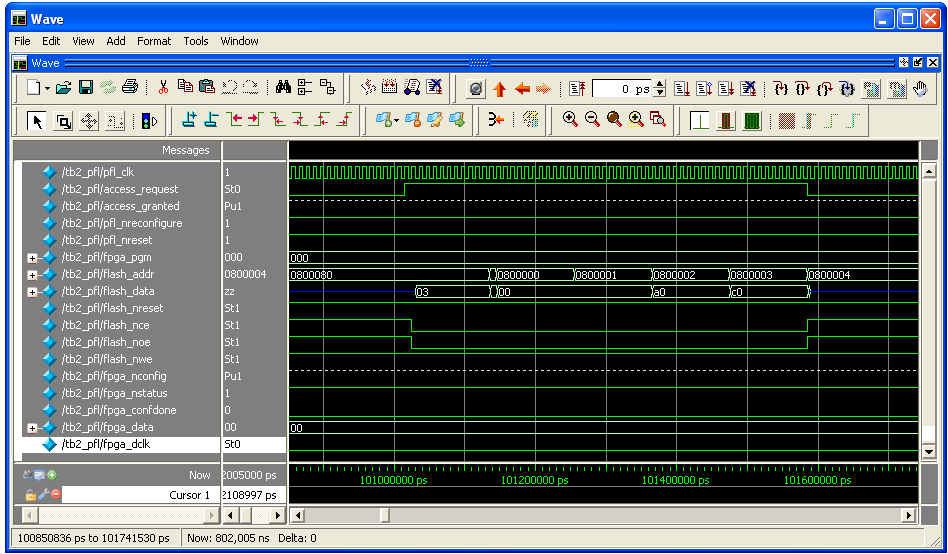1.4.3.3. Performing PFL Simulation for FPGA Configuration
In this simulation example, the start and end addresses of the option bits sector are 0×800000 and 0×800080, respectively. The PFL IP core first reads from the final address, which is 0×800080, to obtain the .pof version information. Because fpga_pgm[2..0] is set to 000, the PFL IP core reads from address 0×800000 to address 0×800003 to get the start and end address of page 0 and the Page-Valid bit. The LSB in address 0×800000 is the Page-Valid bit.
The Page-Valid bit must be 0 for the PFL IP core to proceed with FPGA configuration. While the PFL IP core reads from the flash, it asserts the active-low flash_nce and flash_noe signals, and asserts the active-high pfl_flash_access_request signal.

After reading the option bits for page 0, the PFL IP core waits for a period of time before the configuration starts. The flash_data remains at 0×ZZ within this period. Configuration starts when the fpga_dclk starts to toggle. During configuration, the PFL IP core asserts the flash_nce and flash_noe signals low, and the pfl_flash_access_request signal high.

The FPGA configuration continues until the fpga_conf_done signal is asserted high, which indicates the configuration is complete. After the configuration process completes, the PFL IP core pulls the flash_nce and flash_noe signals high and the pfl_flash_access_request signal low to indicate the configuration data is no longer being read from the flash memory device.